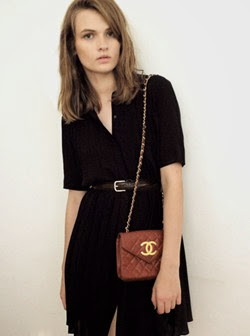2 months
and 1000 hits later I thought I would do a ‘quick’ update for any readers still
not quite sure what I’m banging on about week after week...
The word ‘sustainable’ comes with a whole host of stereotypes and is often completely misunderstood. Dressing sustainably doesn’t mean having to wear
dresses made of hemp or t-shirts created from recycled bottle tops. It encompasses
a whole lot of ethical beliefs and concerns, but in terms of the fashion
industry, sustainability means being aware of what you are wearing and where it
is that those clothes have come from.
The
concept of sustainable fashion targets the unnecessary consumerism that
dominates our society by offering an alternative to the fast fashion industry. The
alternatives are good quality products; hand-made pieces that often use organic
or locally sourced materials. Unfortunately these aspects bring expense,
meaning a sustainable product will always be more expensive. For anyone who
missed my first blog post, A Sustainable Thread was born from my own
frustration at being unable to source affordable sustainable fashion.
After two months of actively trying to shop sustainably here are the best ways I've found to go about it.
Rather
than buying something that will only last one season or a few washes, invest in
something that has the potential for longevity. It doesn’t have to be super
expensive- something as simple as a good pair of jeans that will last you a
year or two rather than a few months.
Shop
second hand: trend cycles mean that what is in season right now probably was 40
years ago too! Vintage shops are a wonderful way to recycle unwanted quality,
affordable clothing and are particularly good for sourcing all the 90’s geek
grunge in at the moment. Charity shops are also a wealth of potential bargains
if you’re prepared to dig deep.
Look
further afield than the high street. Increasingly, young designers are incorporating
sustainable methods into their work; see Christopher Raeburn and Liora Lassalle
or companies such as The Reformation. Rather than letting the sustainable element take priority over the aesthetic itself, brands are beginning to combine the two resulting in on trend sustainable pieces.Look out for sample sales and end of season discounts.
However,
that’s not to say avoid the high-street altogether. Big brands like Topshop and
H&M are also creating specific lines specialising in sustainable pieces. This article that I wrote over the summer for UoN's Impact Magazine explores the way in which high street
companies are beginning to adopt sustainable strategies.
Shopping
sustainably is not as hard as I thought. My bank balance is healthier than it
has been in a long time because I’m not just buying for the sake of it or on a
panic induced whim. Really considering how a specific piece will work within my
wardrobe helps determine whether I actually need or want the item in question
or if it’s just another passing fancy. Just by keeping an eye out and thinking ahead
it becomes surprisingly easy to interpret the season’s trends in a sustainable
way.



















